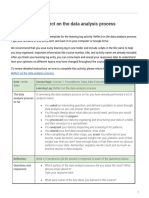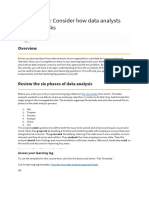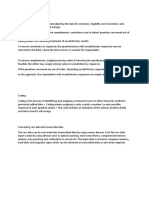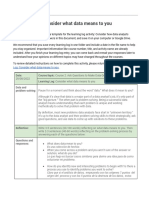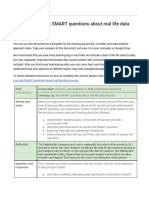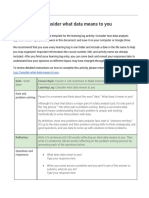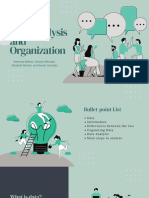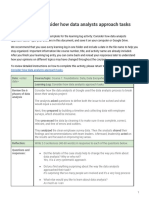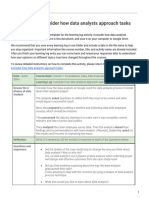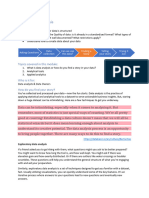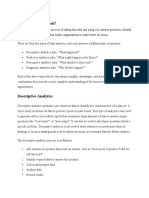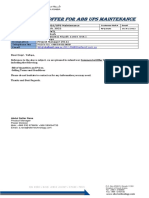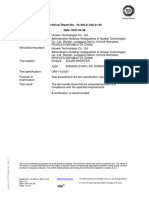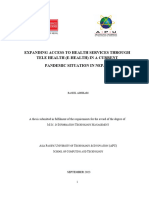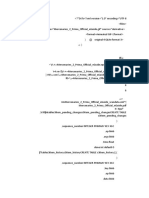1.
3 DATA ANALYSIS
PRE ACTIVITY
Idaily
n order to fully understand the importance of data in our
lives, let us take a look at our Personal Activity Log that
we collected from our previous lesson.
1. Create a list of everything that you have observed as you
analyze each entry from your Personal Activity Log.
2. Categorize each of the activities as Productive, Non-
productive, Essential(e.i. health, hygiene, etc).
3. Identify the activities that you think you can change.
4. Come up with a Daily Routine Schedule.
5. Prepare a short presentation of your output for the class.
Submit your output to our Module 1.3 output
Page 19 of 77
�DISCUSSION
From our previous lesson, Data is everywhere and Data is
historical records. With this in mind, we were able to collect
data through our Personal Activity Log where we are
recording our activities for the past seven days.
With this week’s activity, we will try to analyze ourselves
through our recorded Personal Activity Log. We will look into
things that we normally do everyday and assess its impact to
us as a person.
Question:
1. Based on your output, are you happy with the data you
have collected?
2. Does it properly describe your lifestyle?
3. Have you found something that you would like to be
changed?
Data is just historical record, and it can be discarded
anytime if you have no use of it. Not unless someone goes
through the troubles of reading the data, organize it and
comes up with a statistical analysis(be it in a tabled form or
through a graphical interpretation) that it becomes useful.
A good Data Analyst will be able to sort out any relevant
information and discard what is not needed (garbage
information). Today’s lesson allows you to experience how a
Data Analyst distinguish between a useful information to a
garbage information.
Page 20 of 77
�MODULE REALIZATION
From our previous lesson (Module 1.2), Data is a historical
record. And what you do with it will determine how import the
collected data is.
In trying to analyze the a data set (collection of historical
information) and making it into useful information, you must
be able to conceptualize the information within the dataset.
For example, from our previous lesson, how to you know that
ampalaya is bitter? We can answer it in di erent ways, by
taste, through second hand knowledge (information from
someone who tasted it), printed materials, etc.
Data analysis will always be at rst is “opinion-based” but
as you look through each relevant information even if there
are 3 analysts looking at the same dataset, they will
eventually come up with the same conclusion.
MODULE ASSESSMENT
1. Share your Personal Activity Log to 2 of your classmates.
2. Come up with your analysis on the 3 datasets (your
personal log and 2 personal logs from your classmates)
using the 3 guide questions (change it as a 3rd person
statement) from our Module 1.3 Discussion.
3. Submit your ndings to our Module 1.3 Activity.
Page 21 of 77
fi
fi
ff




